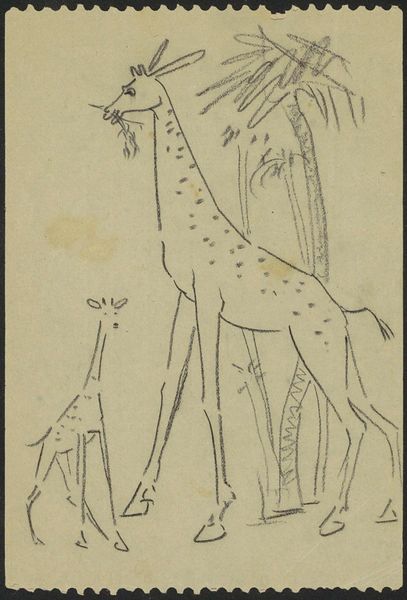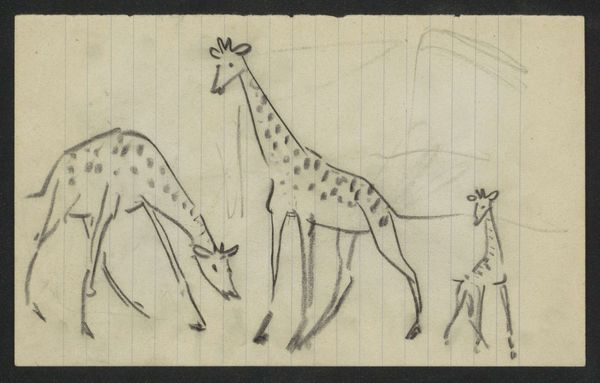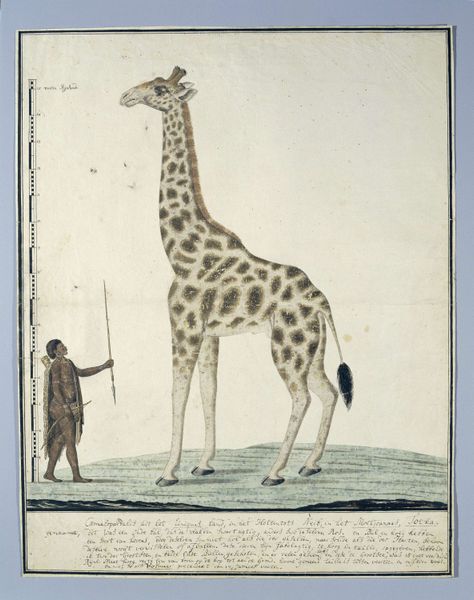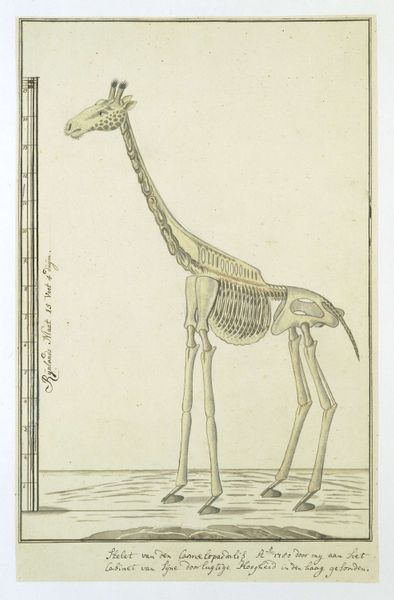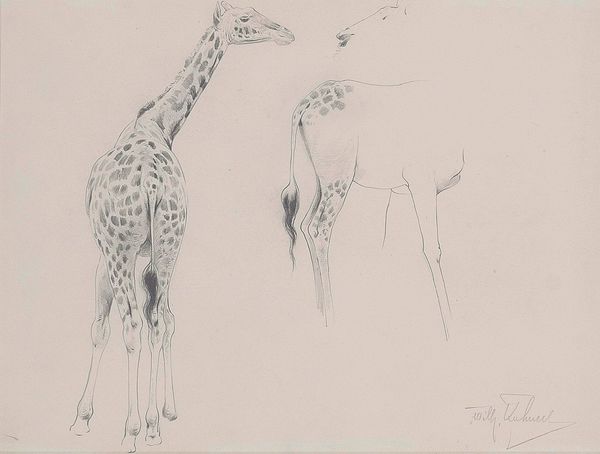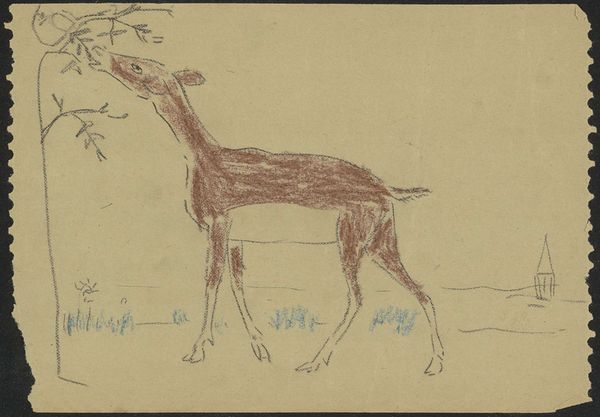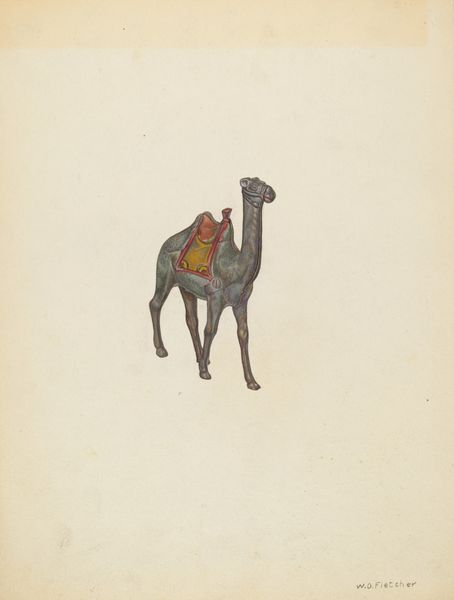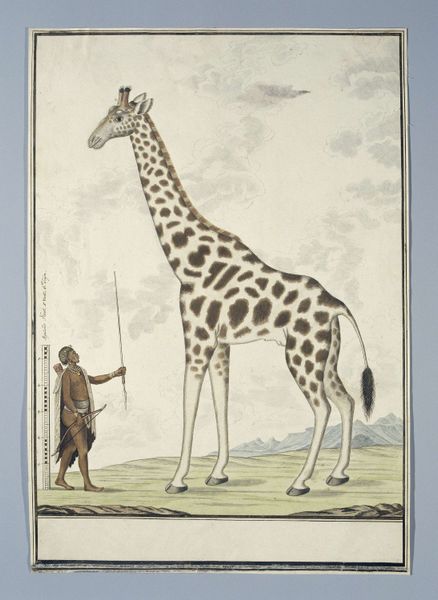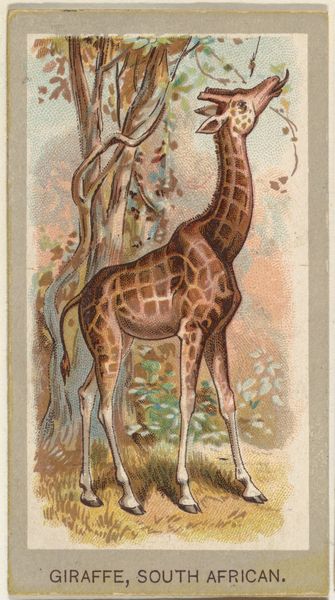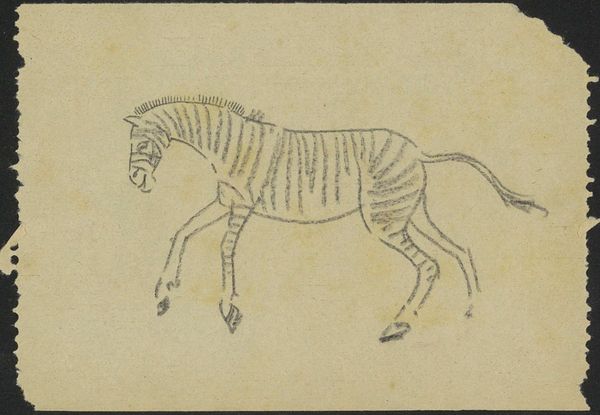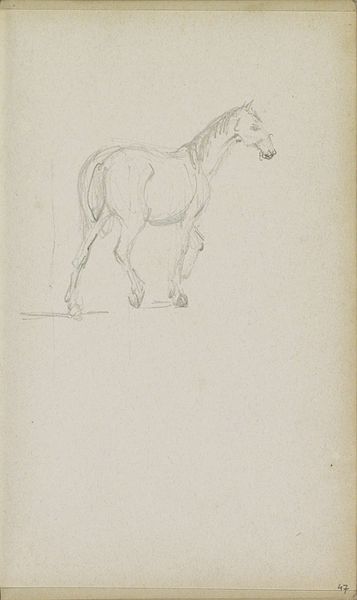
drawing, paper, ink, graphite, pen
#
drawing
#
toned paper
#
childish illustration
#
animal
#
dutch-golden-age
#
old engraving style
#
cartoon sketch
#
figuration
#
paper
#
personal sketchbook
#
ink
#
ink drawing experimentation
#
sketch
#
pen-ink sketch
#
ink colored
#
line
#
graphite
#
sketchbook drawing
#
pen
#
sketchbook art
#
modernism
Dimensions: height 176 mm, width 125 mm
Copyright: Rijks Museum: Open Domain
Curator: My first thought is that it feels so vulnerable and exposed, almost painfully delicate. Editor: That's interesting. Let me provide a little context. What we are looking at here is entitled "Giraffe," a drawing created by Gerrit Willem Dijsselhof around 1904 to 1906. It's rendered in ink, graphite, and pen on paper. You find it so delicate—is that to do with the scale? The visible mark-making? Curator: Both, certainly. But it's the creature's vulnerability that I immediately pick up on. Look how tentative those lines are, how sparse the rendering of its form. The thin, almost spindly legs remind us of a young animal, newly born or perhaps in a slightly unstable moment of rebalancing. We project innocence, frailty. Dijsselhof really highlights the animals inarticulacy. I feel pathos. Editor: Dijsselhof was working within a milieu increasingly preoccupied with modernism at the time. Considering how other artists began experimenting with line and form as tools of social critique or vehicles for abstract ideas, I wonder if his choice to depict the giraffe in such a manner serves a commentary on man's dominion over the animal kingdom during this era, which aligns neatly with contemporaneous anxieties regarding Dutch colonialism? Curator: I appreciate the historical viewpoint. Though, perhaps there’s something even more timeless at play here. Dijsselhof may be hinting at deeper psychological archetypes by reducing the Giraffe’s lines in such a raw form. It's not about simple social critique, is it, when that kind of direct rendering touches collective memories that shape our perception of the animal itself? Editor: True, these lines of inquiry aren’t mutually exclusive. What do you feel Dijsselhof communicates by leaving this piece within the contained privacy of the personal sketchbook? Was he shying away from the socio-political debate or seeking something more fundamentally rooted to human perception? Curator: Precisely. Dijsselhof might well be using this familiar, evocative animal as a symbol. Maybe, something within our human spirit, seeking a way to connect deeper. Editor: Perhaps through the bare essence of nature itself. Thanks for that insight.
Comments
No comments
Be the first to comment and join the conversation on the ultimate creative platform.
